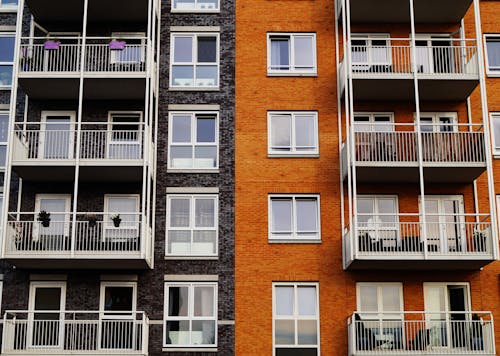Introduction: Why Prepping Isn’t Just for People With Land

You don’t need acres of property, a basement bunker, or a bug-out cabin to be prepared. Most emergencies hit where you live — and millions of people live in apartments, condos, or small urban homes.
Learning how to prep in an apartment is about being resourceful, organized, and smart with what you already have. Whether you’re dealing with a power outage, supply chain disruption, or city evacuation, urban prepping can make all the difference between panic and calm.
In this guide, we’ll cover everything from water storage and food supplies to lighting, power, and security — all tailored for people with limited space and tight restrictions.
Let’s get started.
1. Rethinking Prepping: It’s About Readiness, Not Real Estate
Many people picture prepping as a rural lifestyle — fields of corn, barrels of rainwater, and generators in the shed. But that’s a myth. True prepping is about resilience, not location.
Apartment dwellers face unique challenges:
- Limited space for storage
- Shared walls and neighbors
- No garage, basement, or outdoor fuel storage
- Building rules against open flames or generators
But those same challenges force you to become more efficient — and that’s what makes urban preppers some of the smartest and most creative in the game.
Think of your apartment as a compact command center: everything you need, neatly organized and ready to go.
2. The Apartment Prepping Mindset
Before you buy gear or fill totes with supplies, adopt the right mindset:
- Stay calm, not paranoid. Prepping isn’t fear-based — it’s about peace of mind.
- Work with your space, not against it. Focus on compact, multi-use gear.
- Prioritize essentials. Food, water, power, communication, safety, and sanitation.
- Plan to stay or go. Build both “shelter-in-place” and “bug-out” options.
This mindset keeps your prepping sustainable instead of overwhelming.
In addition, knowing how to prep in an apartment can foster a sense of community.
3. Smart Storage Solutions for Small Spaces
Hot to prep in an apartment starts with creative organization.
Vertical and Hidden Storage
- Stackable storage bins in closets.
- Under-bed containers for food and tools.
- Over-door shelves for first aid and hygiene.
- Vacuum-sealed bags for clothes and blankets.
Every square foot counts.
Rotate and Label
Keep your storage modular — easy to move and reorganize.
Label bins with contents and expiration dates and rotate your supplies every 6–12 months.
4. Food Prepping Without a Pantry
Apartment prepping means being smart with limited kitchen space.
Choose Compact, Calorie-Dense Foods
- Canned proteins (tuna, chicken, beans)
- Peanut butter, oats, rice, pasta
- Freeze-dried meals or MREs
- Instant soups and powdered mixes
- Granola, trail mix, protein bars
Store foods that don’t need refrigeration and have long shelf lives.
Rotation Tip
Keep a “working pantry.” Eat what you store, replace what you eat. That way, your emergency food never expires.
Cooking Without Power
If allowed by your lease, consider:
- Portable butane stove (with ventilation)
- Alcohol stove or small rocket stove on a balcony
- Solar oven for sunny-day cooking
10 Survival Foods That Last 10 Years
5. Water Storage Indoors
Water is heavy, bulky, and crucial. Most preppers underestimate how to store it safely in small spaces.
How Much You Need
Plan for 1 gallon per person per day — minimum of 3 days, ideally 14.
How to Store It
- Stackable 5-gallon jugs or 3-liter bottles stored under beds or behind furniture.
- Collapsible containers for emergency filling.
- WaterBOB bathtub liners that hold 100+ gallons when a storm is incoming.
Another aspect of how to prep in an apartment involves planning for meals without power.
Purification Options
Keep:
- LifeStraw or Sawyer Mini filter
- Water purification tablets
- Unscented bleach (8 drops per gallon in a pinch)
6. Power & Lighting in an Apartment Blackout
When the grid goes down, your apartment gets dark — fast.
Essential Power Sources
- Portable power stations (Jackery, EcoFlow, Bluetti)
- Rechargeable battery banks for phones and flashlights
- Hand-crank radios and lights for low-tech reliability
- Small solar panels (window mountable or foldable)
Lighting
Use LED lanterns, solar path lights, and candles only with safety in mind.
How to Store Fuel Safely for Emergencies.
Ready.gov: Power Outages — for official generator and safety guidance.
When considering how to prep in an apartment, don’t overlook the importance of water storage.
7. Security and Privacy in Shared Buildings
Security matters — especially when resources are limited.
Physical Security
- Reinforce door hinges and strike plates.
- Add a portable door bar or jam lock.
- Keep a flashlight and phone near every exit.
Visual Privacy
- Use blackout curtains or heavy blankets during blackouts.
- Keep supplies out of sight from windows.
Digital & Noise Discipline
In emergencies, less attention = more safety.
Don’t broadcast your preparedness — blend in.
Knowing how to prep in an apartment also means being prepared for security challenges.
8. Bug-Out Planning for Apartment Dwellers
You might not have a garage, but you can still have a bug-out plan.
Step 1: Pack Smart
Use rolling totes or duffel bags that fit under the bed.
Include:
- 3-day food supply
- Water filter & canteen
- Clothing & hygiene
- First aid kit
- Cash & copies of documents
- Small tools & flashlight
Step 2: Map Exit Routes
Know two ways out of your building. Identify nearby rally points like parking lots or parks.
Step 3: Keep Mobility Gear Ready
If you don’t have a car, consider:
- A folding bike
- A sturdy backpack
- A collapsible wagon for heavy gear
Step 4: Stay Informed
Monitor local emergency channels and radio alerts.
Budget Bug-Out Bag: How to Build It Cheap.
9. Community Prepping: The Urban Survival Advantage
In dense areas, your best resource isn’t land — it’s people.
Build Micro-Networks
Get to know your neighbors discreetly. Trade skills: one person might have tools, another first aid training.
Local Knowledge
Know where your local fire station, shelter, and hospital are located. Bookmark community resources online before disaster strikes.
Red Cross: Make a Plan — for community and family preparedness guides.
10. Hygiene & Sanitation in Tight Quarters
If utilities go down, sanitation becomes a problem fast.
Bathroom Backup
- 5-gallon bucket with heavy-duty trash bags and absorbent material (cat litter or sawdust).
- DIY composting toilet setup.
Personal Hygiene
- Baby wipes, soap sheets, hand sanitizer.
- Compact “no-rinse” body wipes for long outages.
When planning your routes, think about how to prep in an apartment for quick exits.
11. Apartment-Friendly Gear List
Top 10 Must-Haves
- Compact water containers
- Food with long shelf life
- Portable power bank
- Battery/solar lights
- First aid kit
- Fire extinguisher
- Door reinforcement bar
- Multi-tool
- Emergency radio
- Cash & documents in waterproof folder
Optional Gear
- Compact sleeping bag
- Folding shovel
- Duct tape & zip ties
- Face masks & gloves
12. Real-World Example: 10×10 Survival Setup
Let’s picture a realistic setup for a one-bedroom apartment.
- Under the bed: Water cubes, bug-out bag, first aid kit.
- Closet shelf: 3-month food supply, flashlights, fuel canisters.
- Corner cabinet: Battery packs, hygiene kits, solar light.
- Hall closet: Tool kit, spare shoes, and coats.
- Nightstand: Flashlight, phone charger, and emergency contacts.
Everything’s accessible, discreet, and easily portable.
13. Printable How to Prep in an Apartment Checklist
This is your quick-start list for small-space survival readiness:
Food & Water
- Two weeks of non-perishable food
- At least 1 gallon of water per person per day
- Water filter or tablets
Power & Light
- Flashlights & extra batteries
- Solar charger or power bank
- Hand-crank radio
Health & Hygiene
- First aid kit
- Personal meds & copies of prescriptions
- Sanitation bucket or emergency toilet
Safety & Tools
Assessing local resources is part of how to prep in an apartment effectively.
Establishing connections with neighbors can help with how to prep in an apartment.
- Fire extinguisher
- Multi-tool / knife
- Duct tape, rope, zip ties
Bug-Out Kit
- Go-bag with food, water, documents
- Clothing & shoes
- Local maps
Download the full “Apartment Prep Checklist” PDF from Backyard Bug Out and start building your small-space survival plan today.
Understand how to prep in an apartment for hygiene and sanitation needs.
14. FAQs
Q: How much water can I realistically store in an apartment?
A: Use modular containers — about 10–20 gallons is realistic. Supplement with bathtub liners and water filters for emergencies.
Q: Can I use candles during a blackout?
A: Use battery or solar lights whenever possible. Candles are last-resort options — always supervised.
Q: How do I handle trash or waste if collection stops?
A: Double-bag waste, store outside if possible, and use absorbent material for odor control.
Q: Is it worth prepping if I might have to evacuate anyway?
A: Yes. Short-term shelter-in-place readiness keeps you safe until it’s time to move. Your gear should be portable enough to leave quickly.
Q: What’s the best emergency food for small apartments?
A: Rice, beans, canned protein, peanut butter, oats, and energy bars — calorie dense, shelf stable, compact.
Conclusion: Small Space, Big Readiness
How to prep in an apartment isn’t about stockpiling — it’s about strategy. You’re not trying to outbuild anyone — you’re trying to outthink the chaos.
By focusing on smart storage, compact supplies, and strong community connections, you can be just as prepared as anyone with a backyard bunker.
Your apartment can be a mini survival HQ — efficient, safe, and ready for anything.
🪣 Next Step:
Download your Free Apartment Prep Checklist from Backyard Bug Out.
Get started with simple steps today — because the best time to prepare was yesterday, and the second best time is right now.
